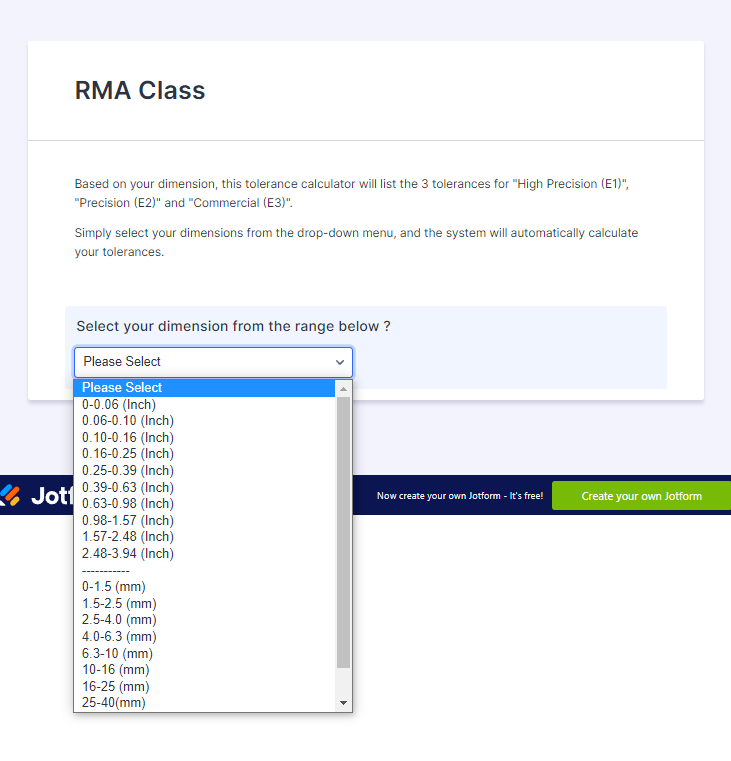Find cross-sectional tolerances for rubber extrusions and extruded rubber gaskets.
Do you design gaskets made from extruded rubber? Then remember to add the right cross-sectional tolerances to your part drawings. Use Elasto Proxy’s RMA Tolerance Calculator to find the possible dimensions you can add. Our online resource is easier to use than the tables that other gasket fabricators add to their websites.
But what if you haven’t worked with extruded rubber before? That’s not uncommon since many engineers work mainly with metals. And what if the tolerances you want to add to a part drawing aren’t ones that a rubber fabricator can achieve? Why is that the case? For that matter, what’s a “cross-sectional tolerance for an extruded rubber gasket” in the first place?
That’s what this article explains.
Cross-Sectional Tolerances and Extruded Rubber
Part designers use tolerances to indicate the differences in size they’ll accept between what a drawing specifies and what a manufacturer delivers. If a gasket has very precise or “tight” tolerances, then there’s the least possible difference in size between what the engineer wants and what the fabricator provides. Yet there are limits to what a rubber fabricator can achieve.
There are two main reasons for this.
- Rubber is sensitive to changes in temperature and humidity.
- The extrusion process itself changes the size of the rubber.
If you’re used to working with metal, you might say: “So what?” Metal is also affected by temperature and humidity, but metal is much less sensitive to these two environmental conditions. Also, metalworking use different tooling and equipment that rubber extrusion, a process that forces material through a die so that it emerges in a continuous length with a fixed cross-section.

Let’s back up a bit. Dies are machined metal tools with an opening that’s shaped like the desired cross-section of the extrusion. Pushing softer rubber through a harder metal die cause the extrusion to narrow. Then, after passing through the edges of this harder metal die, the softer rubber increases in size again. Along with rubber’s greater sensitivity to temperature and humidity, this contraction and expansion explains why you can’t add metal tolerances to extruded rubber parts.
Here, it’s worth noting that not all rubber is extruded. Some is molded, and some is calendared into sheets instead. Because those are different processes, they have different tolerances. There are fabrication tolerances, too. In this article, our focus is on extrusions, however. Even more specifically, it’s on the tolerances you can specify for the cross-sections of extrusions. There are other tolerances for extruded rubber, such as cut lengths and angle cuts, but we’ll save those topics for another time.
The RMA Handbook and ARPM Classes
Years ago, the Rubber Manufacturers Association (RMA) published a handbook that lists tolerances for rubber products. These tolerances are arranged in tables, each of which is numbered. Today, this handbook is maintained by the Association for Rubber Products Manufacturers (ARPM). So, although you may still hear about the “RMA Handbook”, it’s now an APRM publication.
This handbook isn’t free to download, but Elasto Proxy can share some of its content with you as we work together on your gasket project. And remember that our RMA Tolerance Calculator offers an easy way to find the tolerances you need. Just select the dimension for the extrusion’s cross-section, and the calculator will display high-precision, precision, and commercial values.
Why are there three values? It’s because there are three ARPM drawing designations for extruded rubber cross-sections.
- E1 – High Precision
- E2 – Precision
- E3 – Commercial
When you use our RMA Tolerance Calculator, we’ll show you these values based on APRM Table 13 (shown below).
Ask Elasto Proxy for Extruded Rubber Gaskets
Extrusions with high-precision tolerances are the most expensive to produce, and extrusions with precision tolerances cost more than commercial ones. That’s because tighter tolerances need dies that require more (and more precise) machining. So, if you’re concerned about cost, don’t wait until the end of a project to design the gasket. Otherwise, you may need to specify tighter tolerances. There’s also a risk that the tolerances you specify aren’t possible, and that could require a redesign.
Early in your gasket design process, use Elasto Proxy’s RMA Tolerance Calculator. And talk to our team to get the rubber extrusions or extruded rubber gaskets you need. How can we help you?











